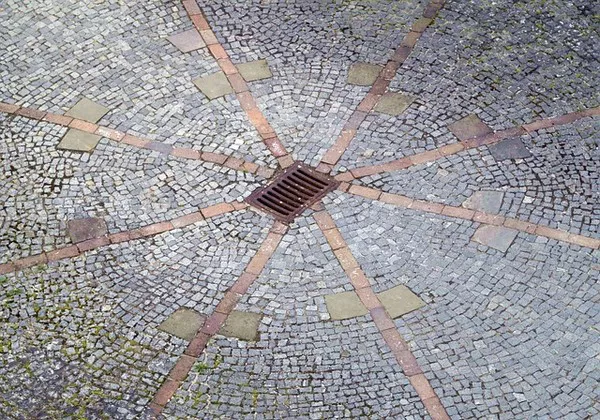A Type 3 septic system, often referred to as an advanced treatment system, represents a sophisticated approach to managing wastewater in areas where conventional systems are inadequate. These systems are designed to treat sewage to a higher standard than traditional septic setups, offering a more environmentally friendly solution. The primary distinction lies in the advanced treatment processes incorporated into Type 3 systems, which go beyond the basic sedimentation and filtration found in standard septic systems. This advanced treatment enables the effluent to be of a quality suitable for safe discharge into environmentally sensitive areas or where soil conditions are challenging.
In a Type 3 septic system, after initial treatment in the septic tank where solids settle and organic matter breaks down, the effluent undergoes additional treatment to remove contaminants like nitrogen and phosphorus. This typically involves processes like aeration, biological treatment, or other advanced methods that enhance the quality of the wastewater. As a result, Type 3 systems produce a higher quality effluent that can meet stricter regulatory standards, making them ideal for areas with strict environmental regulations or those close to water bodies like lakes or rivers. This enhanced treatment capability ensures that the impact on the environment is minimized, offering a sustainable solution for wastewater management in sensitive locations.
How Does a Type 3 Septic System Function?
The operation of a Type 3 septic system begins similarly to a conventional system with the collection and settling of solids in a septic tank. However, the key difference lies in the subsequent treatment processes employed. Once separated from solids, the liquid effluent moves into an additional treatment unit where more advanced techniques are used to further purify the wastewater. One common method used in Type 3 systems is aeration, where air is introduced into the effluent to encourage the growth of aerobic bacteria that break down organic pollutants. This aerobic treatment is crucial for reducing harmful contaminants before the effluent is released back into the environment.
Following aeration, the effluent may undergo secondary treatment such as filtration through sand or other media, or it may be subjected to chemical processes for disinfection. The objective is to ensure that the final effluent meets stringent water quality standards. Some Type 3 systems may also incorporate innovative technologies like membrane filtration or ultraviolet disinfection to achieve exceptional levels of purification. The treated water can then be safely discharged into the soil or surface water, minimizing the environmental impact while complying with regulatory requirements. This comprehensive treatment process not only protects public health but also preserves the integrity of surrounding ecosystems.
What are the Benefits of Installing a Type 3 Septic System?
Investing in a Type 3 septic system offers several advantages beyond basic wastewater treatment. One significant benefit is the ability to mitigate environmental impacts, particularly in ecologically sensitive areas. By treating wastewater to a high standard, these systems reduce the risk of contamination to nearby water sources, preserving water quality and aquatic habitats. Additionally, Type 3 systems can be tailored to suit various site conditions, making them versatile solutions for properties where conventional systems may not be effective due to soil limitations or proximity to water bodies.
Another key advantage of Type 3 systems is their potential to increase property value. In areas where environmental regulations are stringent or where water quality is a concern, having an advanced septic system that meets these standards can enhance the marketability of a property. Homeowners can also benefit from lower maintenance costs over time, as Type 3 systems are designed to operate efficiently with minimal upkeep once installed properly.
How is a Type 3 Septic System Installed and Maintained?
The installation of a Type 3 septic system requires careful planning and expertise to ensure optimal performance. Site evaluation is critical to assess soil conditions, groundwater levels, and property layout. Design considerations include the capacity of the system based on anticipated wastewater flows and the specific treatment processes required to meet regulatory standards. Professional installation by qualified contractors is essential to ensure compliance with local regulations and to maximize the effectiveness of the system.
Regular maintenance is key to the longevity and efficiency of a Type 3 septic system. This includes periodic inspection of components, monitoring of effluent quality, and servicing of mechanical parts if applicable. Maintenance tasks may vary depending on the specific technology used in the system but generally involve routine checks to ensure proper functioning. Homeowners should also follow guidelines for wastewater management, such as avoiding excessive water use and proper disposal of household chemicals, to optimize the performance of the system and extend its lifespan.
See Also What Are The Three Stages Of Wastewater Treatment
Conclusion
In summary, Type 3 septic systems represent a significant advancement in wastewater treatment technology, offering a sustainable solution for properties in environmentally sensitive areas. By employing advanced treatment processes, these systems provide a higher level of purification, making them suitable for areas where conventional systems may be insufficient. The benefits of Type 3 systems extend beyond environmental stewardship to include increased property value and reduced long-term maintenance costs. Proper installation and maintenance are crucial for ensuring the effectiveness and longevity of these systems, making them a viable option for homeowners and property developers seeking efficient and eco-friendly wastewater management solutions.

